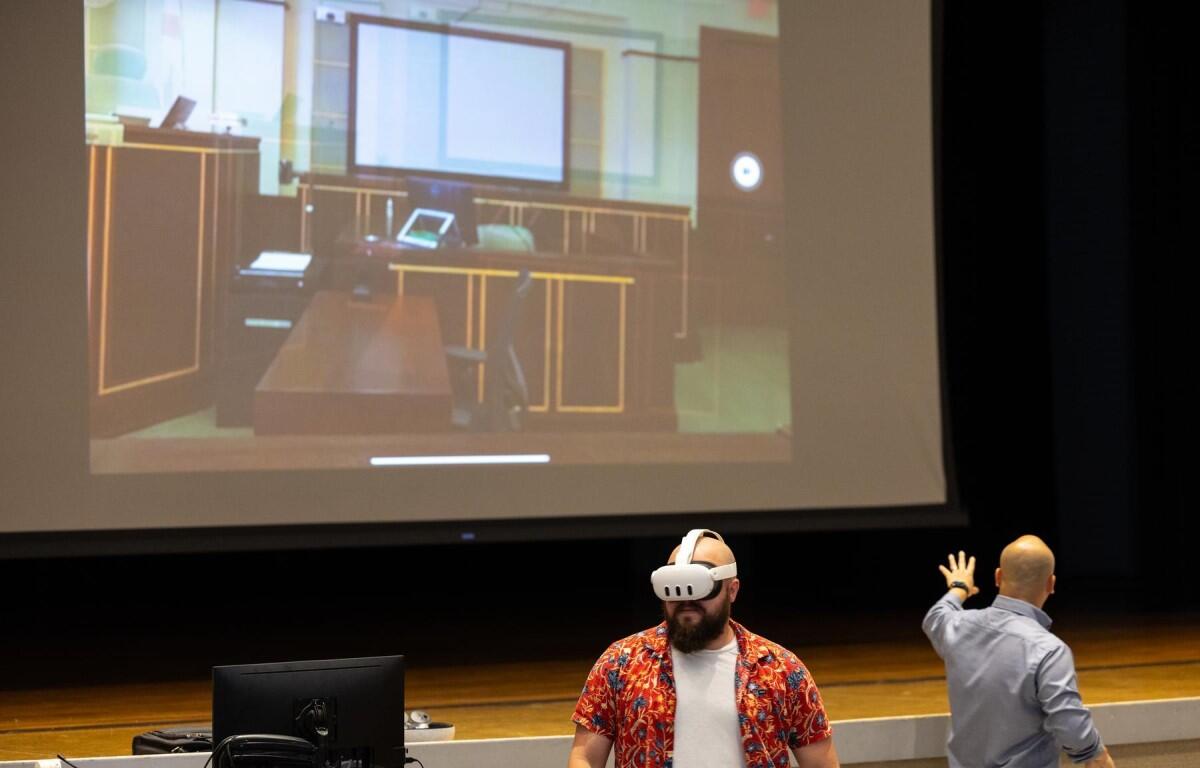CLARKSVILLE, TN − Austin Peay State University’s Department of Criminal Justice is ready to bring students from courtrooms to crime scenes without leaving campus, thanks to a significant investment in virtual reality technology.
Thirty Meta Quest 3 VR headsets will be integrated into the department’s curriculum starting in Fall 2025, with plans to offer hands-on learning opportunities to students across campus.
“I’ve seen major universities doing this outside of Tennessee, but we’re definitely going to be at the forefront of giving that student experience to people here,” said Dr. Scott Culhane, professor and chair of the Department of Criminal Justice. “We’ve made it a priority to improve our online and in-class content, and this is a major part of that initiative.”
The department first tested the headsets in April by giving Intro to Criminal Justice students a 360-degree view of a courtroom available on YouTube, and next semester’s class will conduct a virtual mock trial.
“I’ve always done mock trials in my class, but the issue is that we don’t get that atmosphere,” said Dr. David Kim, assistant professor of criminal justice. “A majority of our students have never been inside a courtroom, and it’s important for them to work on active and experiential learning.”
Kim sees many applications for the technology beyond mock trials and is already planning implementations for his other classes.
“In my policing course I’d like to incorporate VR with police body cameras,” he said. “I want students to be able to view that footage in a 360 environment or simulate a ride-along with a police officer. For my investigations course, I’m trying to find videos where they can go to a crime scene, look at the fingerprints and the damages, and see what it’s like.”
The department is also working with areas including the College of STEM, the Woodward Library’s Makerspace, and other departments within the College of Behavioral and Health Sciences to explore VR-driven partnerships.
“We recently brought the headsets in for the Executive Leadership Exchange with social work, nursing, rad tech, and EMS,” Culhane said. “The idea was to show the capabilities for accident recreations and simulations. People were able to see what it looks like to be extricated from a vehicle, and there’s also the possibility for them to watch first responders at work or ride along in the back of an ambulance without it being a privacy violation.”
In addition to observation, students will have the chance to interact directly with virtual environments.
“The library has five licenses for a software program called Ovation, which we could use to create a virtual criminal for investigation,” Kim said. “We can set it so they have different characteristics, like submissive, angry, or frustrated, and see if the students can successfully interrogate them.”
Culhane said the department is actively seeking partnerships with organizations like the Montgomery County Jail to create virtual footage that gives students real experiences with local facilities. The headsets have the maximum amount of storage space currently available, allowing for plenty of content over time.
“We’ve set ourselves up for success by buying a top-of-the-line model, but I think the expansion will come in the way of a future dedicated VR space,” he said. “Instead of students standing still and turning their heads, we want them to have enough space to walk around and look at a crime scene, go in, and collect information.”


